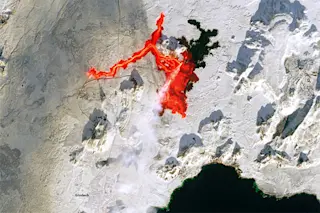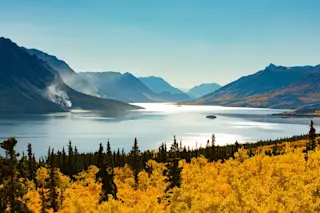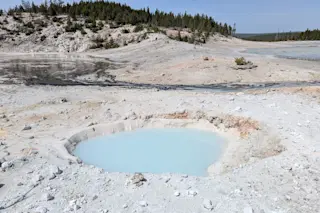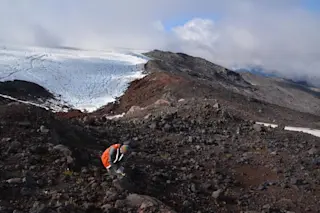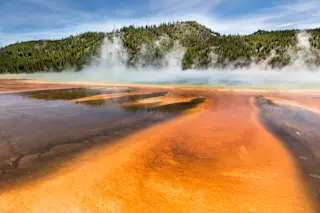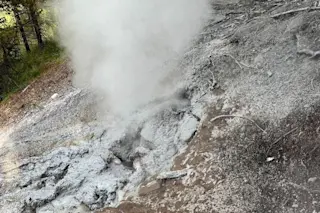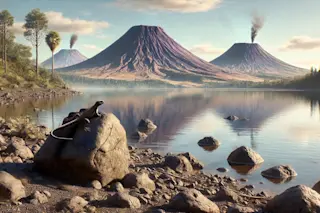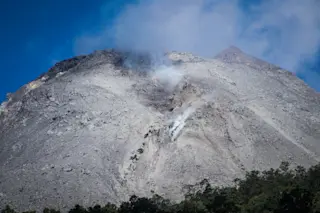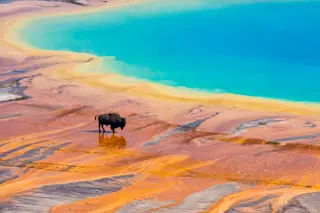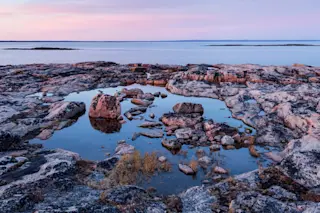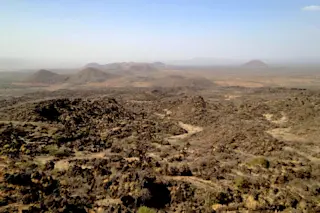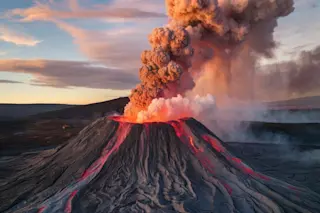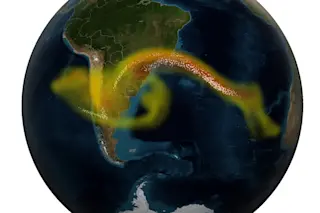Iceland's Reykjanes Peninsula has cracked open again, creating a nearly 2-mile-long volcanic dyke that has allowed lava to shoot up as high as a 20-story building.
The Feb. 8 eruption sent molten rock sluicing across a snow-covered landscape. This has made for some dramatic views from space, as seen above in an image acquired by one of the Sentinel-2 satellites, and in this one captured by Landsat-9 on Feb. 10:
Landat 9 image acquired on Feb. 10, 2024. (Credit: NASA Earth Observatory)
NASA Earth Observatory
In natural color views, the lava is faint — if it's visible at all. But in the infrared, it burns brightly. So to create this compelling image, visible and infrared data were combined.
This is the third eruption on the Reykjanes Peninsula since December. The remains of the second one, which occurred in January, can be seen to the south and a little east of ...


